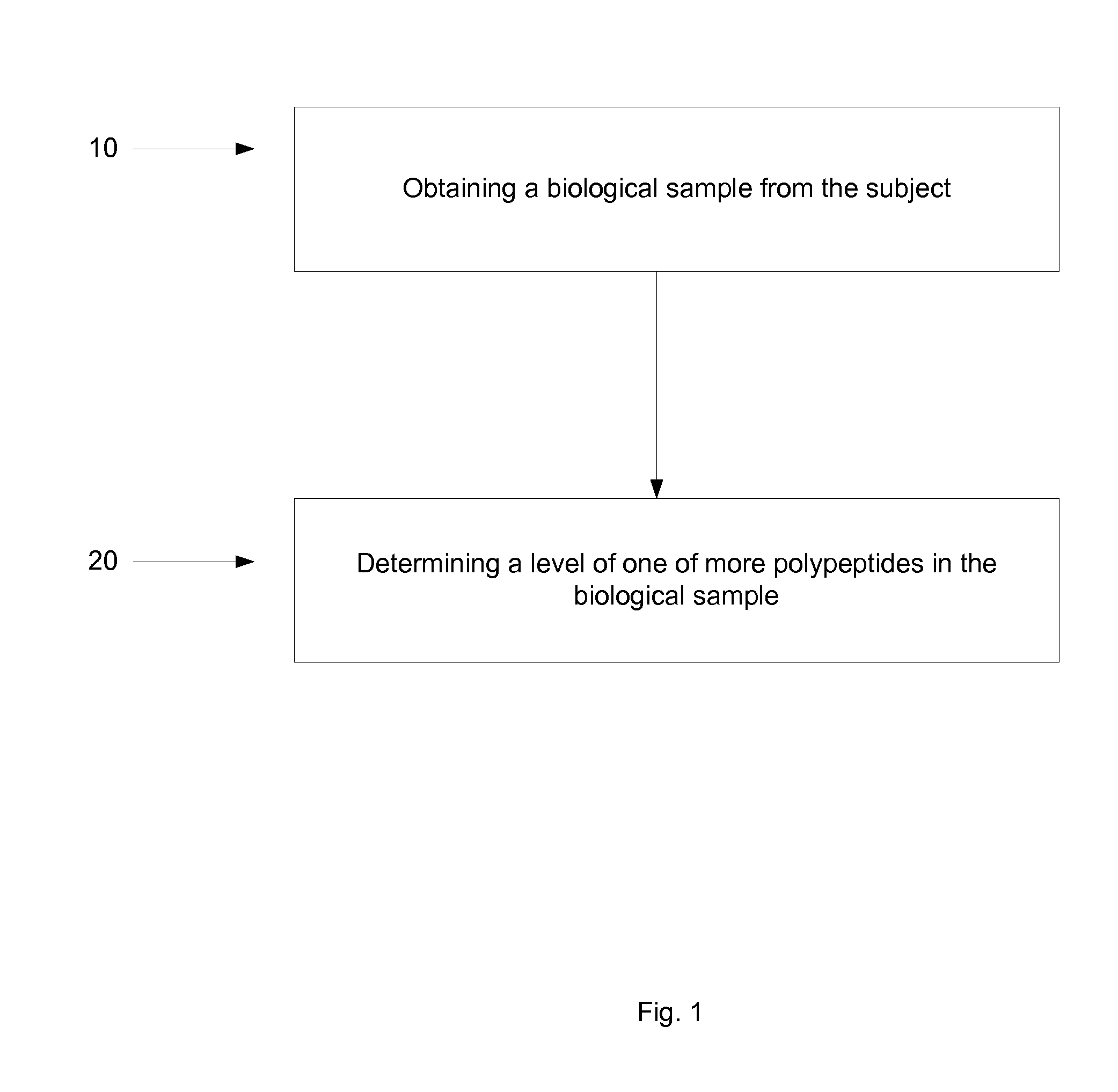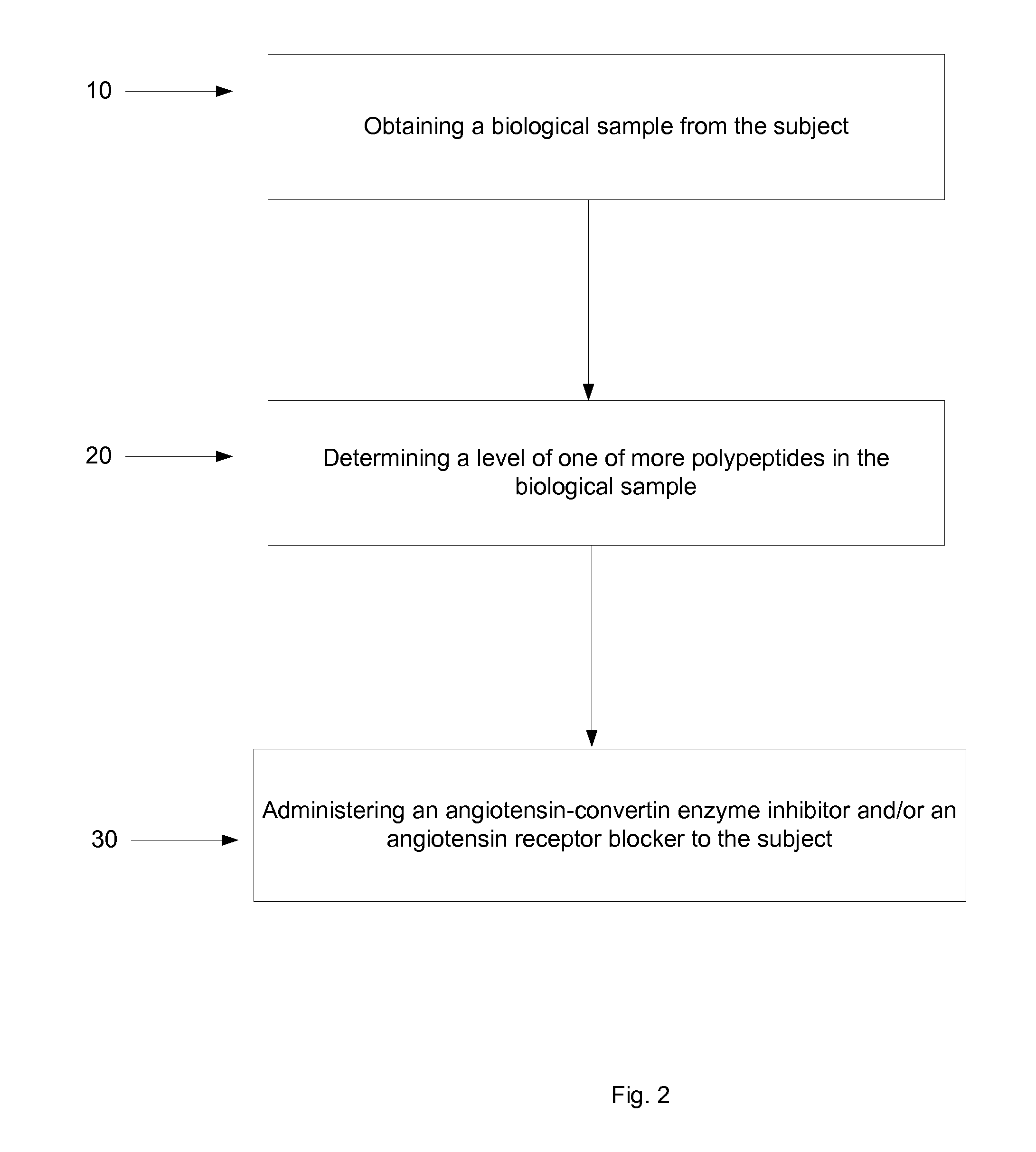Protein biomarkers and therapeutic targets for renal disorders
a technology applied in the field of protein biomarkers and therapeutic targets for renal disorders, can solve the problems of increased mortality risk of type 1 dm patients who progress to esrd, increased risk of diabetic complications such as nephropathy and cad, and increased risk of esrd patients
- Summary
- Abstract
- Description
- Claims
- Application Information
AI Technical Summary
Benefits of technology
Problems solved by technology
Method used
Image
Examples
example 1
Biomarkers Indicative of Diabetes
[0088]Understanding changes in protein abundance, modifications, and iso-forms not only informs the pathophysiological basis of disease and health, the reliable and reproducible detection of such changes in proteins can be utilized as biomarkers for the presence of disease and its remission. Although no single technique can mine all the complexity of the proteome derived from the range of available biological samples in a single type of experiment, a number of standard approaches have evolved that are extremely valuable and reliable in quantifying protein abundance for biomarker discovery. One such method is label-free protein expression which capitalized on the recent advances in chromatographic reproducibility and high-resolution mass spectrometry instrumentation now available which have resulted in a blossoming of quantification methods for proteomics studies. This method includes clustering of identified peptides across multiple samples as well a...
example 2
Biomarkers Indicative of Kidney Dysfunction
[0090]This Example outlines proteomic methods to examine the abundance of key proteins in human urine to be used as a routine screening test for detecting increased risk of complications in Type 1 and 2 DM patients as well as patients with hypertension. These urinary markers reflect early changes in GFR and biological changes in kidney that indicates progression of renal disease and risk for CAD. The indicated markers can be used as prognostic indicators to trigger standard and effective therapeutic interventions with angiotensin converting enzyme inhibitor (ACE-I) and / or angiotensin receptor blocker (ARB) treatments earlier than currently prescribed, likely lowering the risk of both ESRD and CAD and providing significant costs savings to health care systems and improving patient outcomes. This Example outlines the specific markers and assays in human urine samples to detect these markers by mass spectrometry, ELISA, or related antibody and...
example 3
[0096]In this Example, we have performed a longitudinal label free protein expression study to discover early biomarkers of ESRD prior to the onset of disease. Label free protein expression is a peptide based proteomic technique which capitalizes on the highly reproducible chromatography and accurate mass accuracy available in current liquid chromatography / mass spectrometry (LC / MS) systems. This platform quantifies a peptide by its intensity and groups each peptide across individual samples based on its accurate mass and retention time. These intensities are organized into peptide array tables that may be further processed using statistical techniques. Here we describe a label free protein expression analysis in adults with type 1 diabetes who developed microalbuminuria (MA) or a significant decline in estimated GFR over six years of follow-up. We determined a panel of proteins which can serve as novel biomarkers of early development of renal disease. In addition, we verified a sele...
PUM
 Login to View More
Login to View More Abstract
Description
Claims
Application Information
 Login to View More
Login to View More - R&D
- Intellectual Property
- Life Sciences
- Materials
- Tech Scout
- Unparalleled Data Quality
- Higher Quality Content
- 60% Fewer Hallucinations
Browse by: Latest US Patents, China's latest patents, Technical Efficacy Thesaurus, Application Domain, Technology Topic, Popular Technical Reports.
© 2025 PatSnap. All rights reserved.Legal|Privacy policy|Modern Slavery Act Transparency Statement|Sitemap|About US| Contact US: help@patsnap.com



